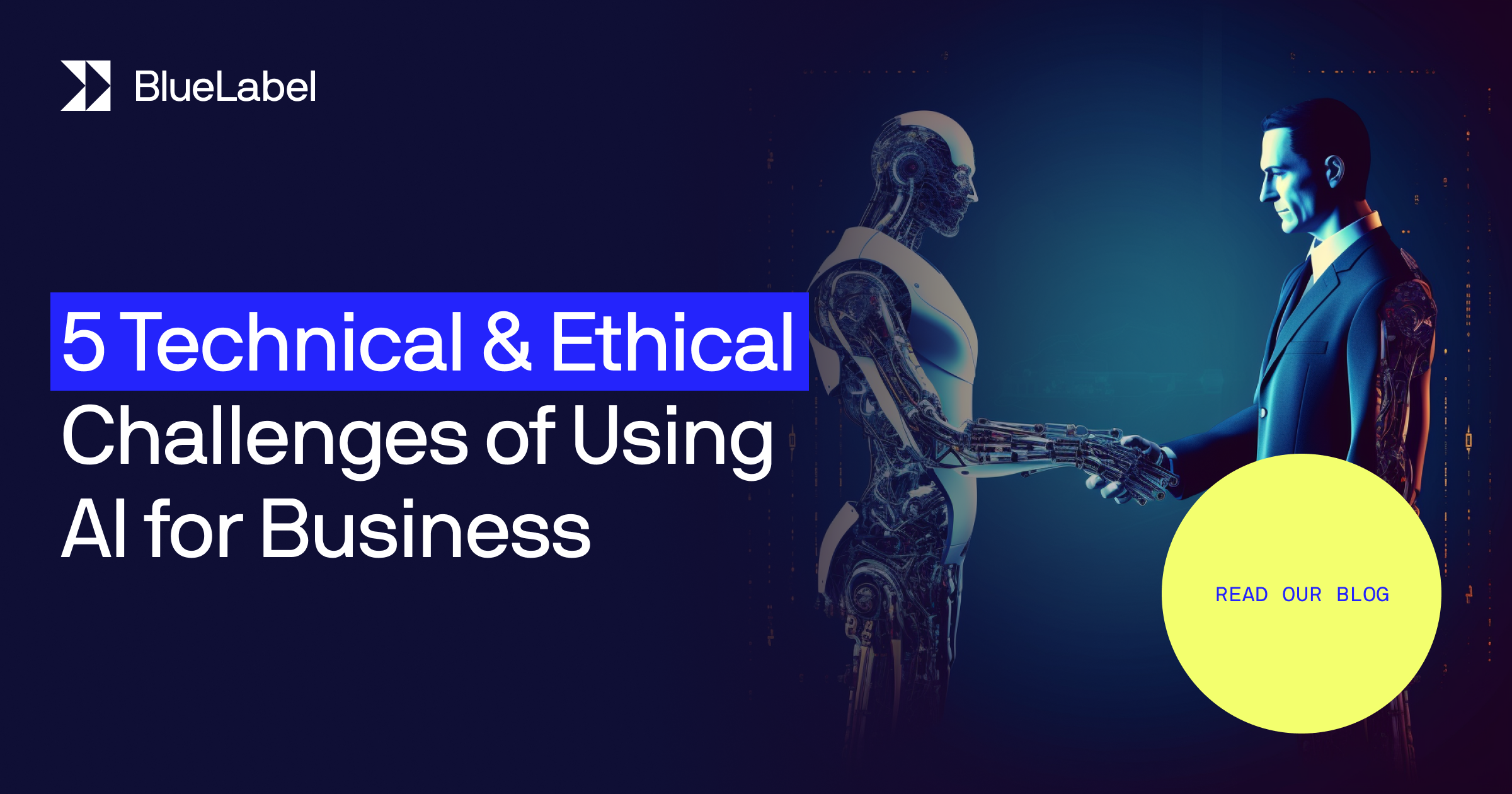We Surveyed 500+ People to Learn How AI is Used by Businesses
Headlines in the media and discussions around the web seem to show that AI adoption is increasing and shifting around emerging value propositions.
To better understand how business uses modern AI, we surveyed over 500 people to gather data on the matter, and here, we share insights from our findings.
Key summary of our findings
Below are some of the most important figures we uncovered from our data.
- AI Purpose: The most common primary purpose of using AI is to “Cut costs / increase efficiency,” with 182 (36%) respondents selecting this option; research was the next most common purpose, with 163 (32%) choosing this reason.
- Current AI usage: Of the 511 respondents, 249 (49%) report using more than one tool, with 362 (71%) using an LLM (Large Language Model) like ChatGPT or Bard, 162 (32%) using marketing or web analytics tools, and 85 (17%) using financial forecasting products, among others. A total of 120 (24%) reported not using AI or were unsure if such solutions are in use at their workplace.
- AI Adoption: Most respondents (276 total) were unsure if their business would adopt any new AI product in the next year, while 200 said “Yes” and “33” said no
- Spending on AI: Except for the 120 respondents who reported not using AI, average expenditures ranged from as little as $20 per month to over $30K monthly, excluding outlier responses.
- In the following sections, we’ll dive into more details to provide more context for each piece of data. Please view our methodology doc here for more insight into how we analyzed the data, partially relying on GPT-4 and the Code Interpreter for specific insights.
A look at user demographic & employment information
We used a different platform for this survey than our previous market research projects, opting for the UserTesting over SurveySparrow.
This allowed us to access a different audience and better target responses from those (in most cases) working closer with decision-making processes and those working as management or owners.

The most common company size is 501-1000 employees, with 100 respondents working in companies of this size. The most common sector is “Information Technology and Services,” with 42 respondents working in this industry and 54 reporting as working in a tech-related role, though responses were overall quite diverse.
This audience reflects a good distribution of people working in larger enterprises. In addition to the many who responded from SME organizations, we constructed a good overview of current AI use by industry and projected spending in the short term.
The most common AI types used by business & reasons for use
Virtually all businesses with any digital offering already use some form of AI. For example, underneath websites and apps we all use are intelligent programs that help with the more tedious infrastructure management tasks as well as content delivery and data storage, to name a few.
While these technologies now often operate quietly without much attention from the mainstream, it’s essential to keep this in mind, as intelligent systems are helping everywhere without the buzz. In time, some of today’s trending topics will quietly fold into other products, as we already see with LLMs like ChatGPT.

It shouldn’t come as a surprise, but a sizable portion of respondents (49%) acknowledge using at least one or more modern AI solutions in the workplace. Only 120 respondents reported not using any tool from the classification choices seen in the graph above.

Though all related on some level, respondents provided different goals for using AI products, where efficiency gains and cost savings (36% ) were the most popular, followed by research at (32%), and revenue growth (14%) being the least reported.
Note 94 (18%) of those who previously reported not using any AI tools or being unsure selected the “Unsure or Not Applicable” choice here. For 26 of the responses, respondents indicated knowing their business is using or investing in AI but were not familiar enough with the initiative to name the products in use.
How much are businesses spending on AI & what they’re spending it on
Here’s the million-dollar question with a fifty-thousand-dollar answer: spending on AI has massive disparities between industries, business sizes, and each specific use case.
To get a bird’s eye view of spending, we created logical industry groupings from responses and averaged spending for each category.

Some respondents claimed spending to be in the millions in a handful of responses, which is probable for businesses currently investing in their backend technologies. However, we omitted these outlier responses (6 total) from this particular data set because it significantly skewed the data, making graphs and other visualizations of little value.
Except for one of the omitted responses, spending in the upper hundred thousand to millions of dollars was reported for different industry uses. Ignoring these user responses, the highest spending in the top three named industries is $33433 for manufacturing, $20360 for finance, and $14851 for Information Technology.

For this last data set, we used all but one problematic response to compile an overview of average annual spending on specific business services and processes. Right now, the highest spending on AI is reported for the packaging and shipping of goods (around $750K), followed by military and commercial construction at $500K each.
As shipping is one process connected to multiple industries, it’s no surprise that transporting items and components between consumers and businesses is the top spend. Note: many companies spend in more than one category as there is often an opportunity to gain benefits by using multiple solutions for each’s specific value.
Because this data encompasses responses from businesses of all sizes across multiple industries, this won’t provide a good benchmark for most companies in a direct comparison. However, it would be wise to review the above categories and identify those relevant to your operation to explore current and upcoming solutions to understand benefits unique to your organization.
An AI-filled future: what’s in store for the world
The patterns surfacing appear to be much like any other tool that’s emerged throughout history, offering vast improvements over their predecessors, be it a steam engine, the microwave oven, or a smartphone. While some decisively use specific products for well-defined benefits, many solutions are still considered experimental for some companies.
However, the potential problems are substantial for some products, and some uncertainties remain about the ethical usage of specific emergings systems that can’t be ignored. Celebrities like Sarah Silverman are taking legal action against OpenAI, and ongoing concerns regarding the ever-growing pay gaps in the business world where profits haven’t historically “trickled down” is already giving rise to more extreme pockets of resistance.
Learn more about the technical and ethical restraints of AI by clicking here.
Further, the expectation is that many technologies will disrupt several white-collar roles (and in some places, they already are), just as other revolutionary trends have before. As such, businesses must approach AI deliberately and patiently, even when others aren’t following suit.
Final thoughts on our AI survey
We learned almost all industries already use modern innovative solutions, particularly LLMs and analytics platforms, to make specific processes more efficient. Manufacturing and finance, which arguably use the most complex solutions, spend the most on AI, with the highest dollar amounts spent on shipping-related expenditures across all industries.
Though some problems are expected with some flavors of modern AI, businesses will see more gains as these solutions further mature. As always, we’ll continue to monitor trends and share what we learn with the business world.










